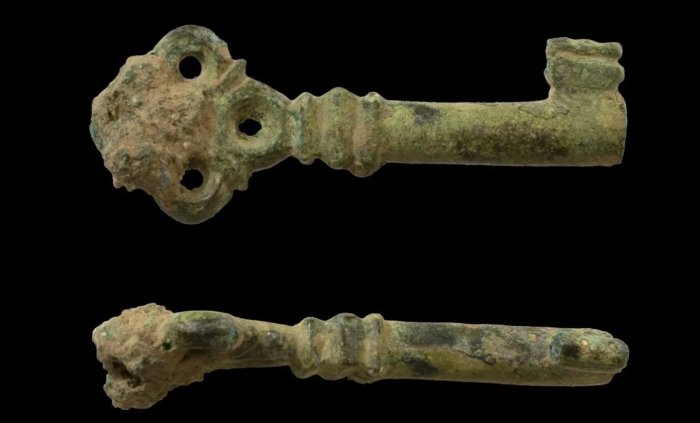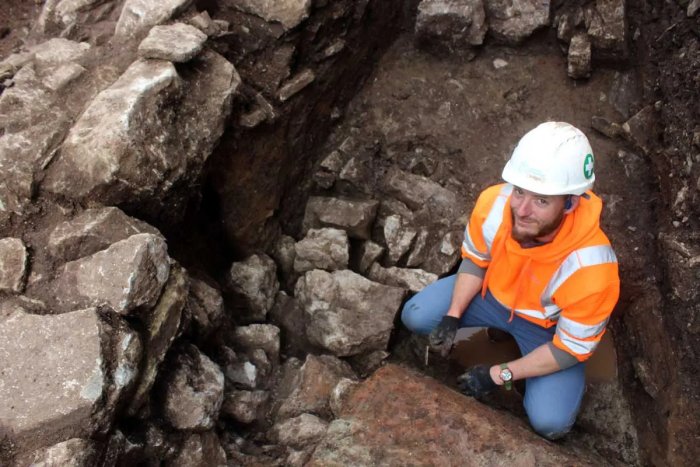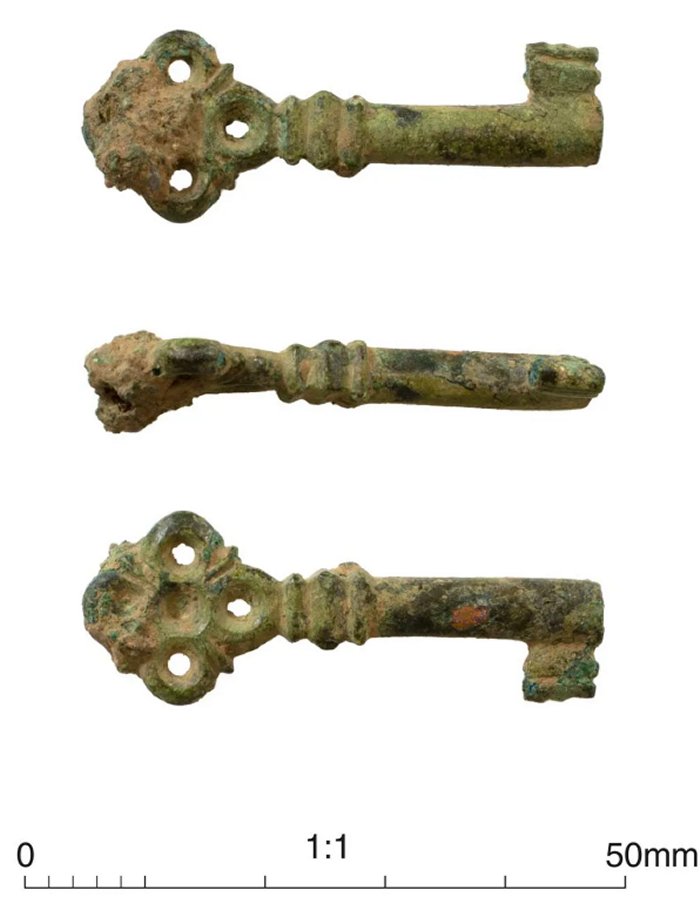Conny Waters – AncientPages.com – This beautiful little key was recently recovered by our Kemble field team from a Newland Homes site near Claverham, North Somerset.

Medieval key from Court De Wyck. Image source
The excavation was situated immediately adjacent to the former location of a medieval manor house, Court De Wyck. During the fieldwork, the researchers we uncovered a series of walls related to the original building and its subsequent iterations.
The key, which is likely late medieval (c. 1300–1539), was discovered in ᴀssociation with a Post-medieval wall, which followed the same alignment as the medieval boundary wall for the manor house. It’s been identified as a rotary key, which are so named as they fit into a lock and rotate in order to lift tumblers or levers, or to push springs, so that the lock can be opened.
Keys are synonymous with locks – you don’t need a key if there’s no lock! First developed around 6000 years ago in ancient Babylon and Egypt, the first locks and keys were made of wood.
However, wood is not a very sturdy material, and with a small amount of force can easily be broken – not very helpful as a security device! Also, the wooden keys were heavy and cumbersome. During the Roman period, the designs were greatly improved via the use of metals which created much sturdier locks.
Additionally, the introduction of wards (obstructions which prevent the lock from opening without the correct key) improved their security further.

James excavates a medieval wall at Court De Wyck. Image source
Roman keys and locks were also much smaller, making the key far easier to keep on your person. Wealthy Romans even wore elaborate keys as jewellery items, symbolising their affluence – if the key was elaborate and ornate, imagine what was kept in whatever it locked!
Elaborate or ornate keys were produced from the Roman period to the present day, and the key from Claverham is no exception. Our key is copper alloy, and has a decorated bow, or key handle, depicting a quatrefoil or ‘four-leaf clover’ with a perforation in each petal and an additional one in the centre.

Medieval key from Court De Wyck. Image source
It has three sub-rectangular mouldings at the junction between the stem and the bow, which form a bulbous collar. The stem is circular and hollow, and the bit (which goes into the lock) is sub-rectangular in shape with at least one groove or channel at the exterior end.
The key was likely used for a door or a chest and is similar to a common type of medieval key referred to as ‘London type VI’. These keys were large copper alloy keys with chunky proportions, typically measuring 80–100mm long. They had fully or partially hollow stems and large, complex bits. Though our key has similar characteristics to these keys, it is much smaller. Consequently, the key recovered from Claverham is likely a less common form of medieval key, which was similar in design, but much smaller (typically 50–70mm), which had simple bits.
Locks and keys are always enigmatic finds; symbolic of personal property, exclusion and hidden mysteries, they are interesting items to study and call to our inner adventure seekers. Who doesn’t want to find the key to a lost treasure?
Though we can determine a likely date for our key, the question remains – what did it open?
Original source – Cotswold Archaeology on their website.
Written by Conny Waters – AncientPages.com Staff Writer





